As an SEO expert, you know what it takes to get your content ranked high in search engine results.
Depending on how good you are at SEO, sometimes the only results displayed higher than yours are those from PPC campaigns.
SEO and PPC are considered to be two very different marketing approaches. But these strategies are more similar than you think.
The biggest difference between SEO and PPC is you’re paying for your PPC campaigns, as the name implies. Driving organic traffic to your website with SEO is free.
While keywords are obviously important to PPC managers, they don’t need to focus on search engine optimization as much because they’re bidding on those keywords.
If they’re willing to pay enough, their search engine ads can generate hits and clicks, even if their headlines aren’t extremely SEO friendly.
Using SEO to drive website traffic is much more competitive. To gain an advantage over your competitors, you can use PPC principles to improve your SEO strategy.
After all, your search ranking is useless if it doesn’t generate clicks.
These are the top 13 marketing tips SEOs can learn from PPC managers. By combining principles from these two strategies, you’ll be able to drive more traffic to your website.
1. Write headlines that generate clicks
As I said before, the basic principle behind SEO is getting a high search ranking. This is obviously very important for your traffic.
But is that high ranking translating to clicks and traffic? It should.
The first page of search engine results generates 75% of all clicks.
If you’re getting ranked high but not seeing a spike in traffic, there is likely a problem with your headlines. You need to learn how to increase clicks by mastering your headlines.
There are common elements in titles that encourage clicks.
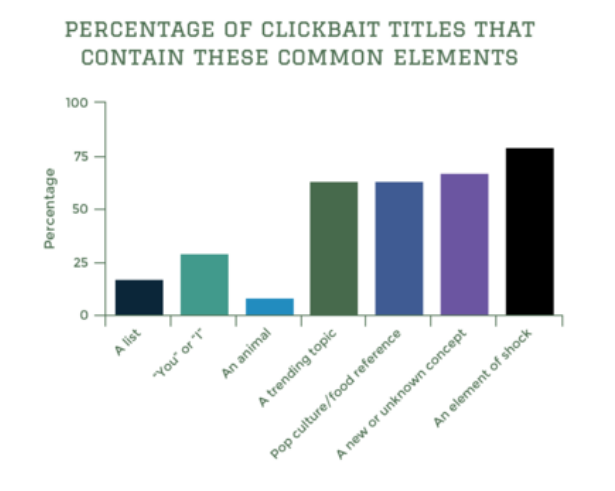
Even if your headline has SEO friendly keywords, it doesn’t mean people will click on it.
PPC managers are masters at writing great ad copy. This helps improve their click-through rates and increases their quality scores.
But with SEO, you don’t need to pay for ads to generate clicks.
You just need to make slight adjustments to your SEO headlines that will make them more enticing.
For example, add a number to your headline. You may not think this is good for SEO because people probably aren’t searching for numbers. But this strategy generates clicks.
Headlines containing numbers are 36% more likely to get clicked. Using odd numbers improves CTR by 20% compared to even numbers.
2. Come up with new keywords
Don’t be broad with your keyword research.
Get specific. Use long-tail keywords to generate more relevant search results.
Using long-tail keywords will also make the search results less competitive. For example, let’s say your company sells backpacks.
If that’s the only keyword you’re using, it’ll be tough to get ranked high and generate clicks.
But if you’re using long-tail keywords, e.g., “red waterproof hiking backpack,” you’re appealing to a very specific audience.
Yes, the search volume for those words will definitely be lower. However, you won’t be competing with as many websites.
Now you’ll get ranked higher and increase your chances of getting more clicks.
It’s also important to use new keywords based on seasons, promotions, or the audiences you’re trying to target with specific campaigns. Don’t use the same keywords over and over again expecting to get great results, especially if the keywords are highly competitive.
3. Monitor keywords from your competitors
Your keyword research shouldn’t be conducted in a vacuum. You need to know what your competition is doing.
PPC managers use this strategy to help them see which keywords are the most competitive. It allows them to adjust their bids accordingly.
But it’s important for you to implement this strategy when you’re focusing on search engine optimization as well.
Try using tools such as SpyFu to help you with your keyword monitoring:
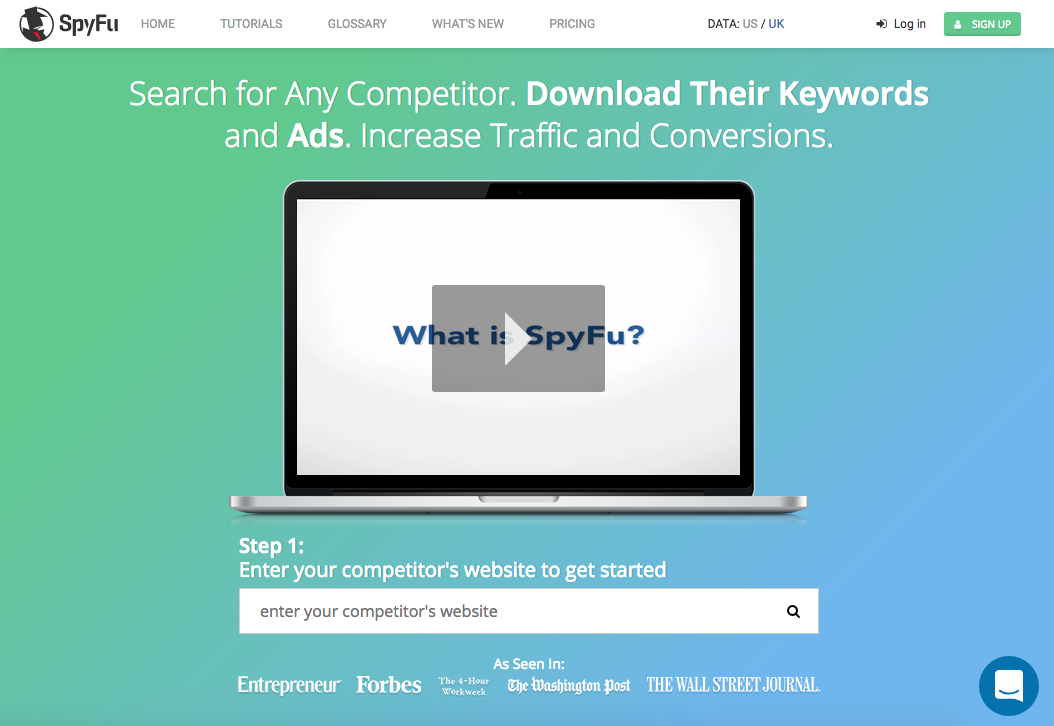
With SpyFu, you can search for specific competitors, and the platform will analyze their websites’ content.
You’ll be able to identify exact keywords they’re using.
Based on this information, you can make the necessary adjustments. If one of your competitors is always getting ranked higher than you, maybe it’s time for you to start using some of their keywords.
You can make those keywords even better by turning them into long-tail keywords, which I’ve already talked about.
4. Track your leads with UTM parameters
Where are your leads coming from?
I’m hoping you’re not relying solely on organic search traffic to get more visitors to your website. You should be running other campaigns as well.
If you see a spike in website traffic, you can’t assume it’s coming from your improved SEO efforts. But how can you know for sure?
By creating custom links with UTM parameters, you’ll be able to distinguish your search engine traffic from the traffic generated by other campaigns.
For example, you can set up a unique link for each one of your email marketing newsletters. Have a different link for all your social media posts.
If you’re running ads on other websites or getting affiliate links, those should each have a custom URL as well.
Now you’ll be able to identify the sources of your traffic. You’ll see which headlines, ads, platforms, and promotions are yielding the highest results.
PPC managers do this to see if it’s worth it to continue paying for specific ads on websites. But you can use it to figure out if your SEO strategy and keywords are working.
5. Optimize keywords for mobile searches
When it comes to your keyword research, you need to keep different devices in mind.
That’s because more than half of all website traffic comes from smartphones and tablets.

In this day and age, you need to keep an eye on the most important mobile trends of the year.
Mobile devices changed the way people search.
What do I mean by this?
The same person using their smartphone to search for something will enter different terms than they would if they searched using their desktop or laptop computers.
In fact, 79% of all Google keywords rank differently in mobile searches. And 47% of the top 20 positions are ranked differently on mobile devices compared to desktops.
You need to identify these differences and adjust your keywords accordingly to accommodate the needs of mobile users.
6. Retarget your prospects
Let’s say someone visits your website because of your SEO efforts.
That’s great. But now what?
You need to understand how people search, navigate, and convert. Just because someone lands on your homepage through organic search traffic doesn’t mean they’ll convert.
Maybe they’re just browsing or scanning a blog post. After that, they’ll leave your website.
That’s why you need to learn how to increase conversions with retargeting strategies.
Retargeting campaigns can get these visitors back to your website in the future.
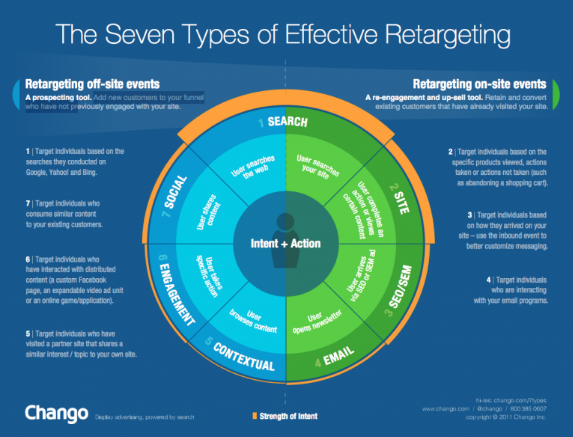
You can take the lead from PPC managers and run ads on other websites.
When the user lands on your site in the first place, you can use cookies to track their browsing behavior. Now they’ll see your ad when they visit another website.
Change up your ads so they don’t keep seeing the same ones over and over again.
7. Run A/B tests on your landing pages
You need to make sure your clicks are driving conversions.
If you can create landing pages that have high conversion results, you’ll be able to make more money whenever you increase your site traffic with SEO.
Right now, you might be satisfied with your conversion rates. But how can you be sure the pages are optimized for the highest conversions?
You can’t know for sure unless you test and measure the results.
Use A/B testing to change different elements on your landing pages to see whether you can improve those conversion rates.
Test things such as CTA placement, images, CTA wording, sizes, value proposition, and color schemes. You can basically test every element on each landing page to come up with the best design to drive conversions.
SEO focuses on site ranking and traffic. PPC managers focus on clicks. But both SEOs and PPC managers ultimately need to prioritize conversions.
8. Target people based on their locations
PPC marketers use geotargeting campaigns to limit their search results to prospective customers within a specific area.
Google AdWords lets you set this up:
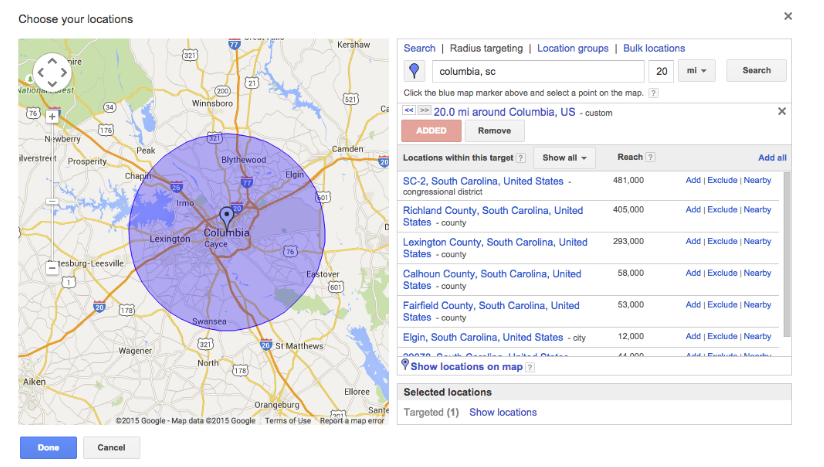
When it comes to your SEO strategy, you can still target people based on their locations, even if you don’t want to pay for ads.
Just create specific landing pages for different areas.
For example, let’s say your business has locations all over the country. Each location should have its own local website.
This will increase the website traffic for people within those areas whenever they search for something relevant to what you’re offering.
You can even create custom landing pages based on these locations. For example, the needs of consumers in Boston will differ from those of consumers in Dallas when it comes to buying clothing in December.
9. Showcase your competitive advantage
In a list of search results, your website will appear next to the websites of your competitors. Even if you’re paying for ads, other sites will pay for ads that will show up on the page too.
How can you stand apart from your competition?
Write SEO-friendly headlines and meta descriptions that show your value proposition. Just look at these ads that come up when you use Google to search for plumbers in Seattle:
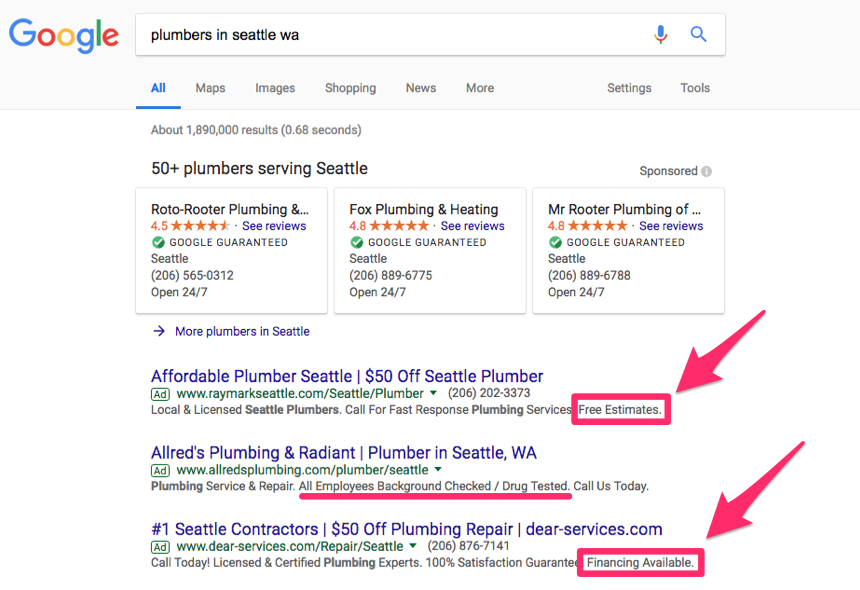
What’s going to make users pick one business over the others?
The top advertisement offers free estimates, which is very enticing, especially for plumbing services.
Another company has financing options available to help its customers pay off expensive services.
Take a look at the ad in the middle. To stand out from the crowd, they tell you that all their employees are background checked and drug tested.
Honestly, I thought this was odd to mention, but it definitely helps them stand out from the other ads on this page.
10. Consider the timing of your ads
If you’re going to take your SEO campaigns to the next level and start running PPC ads, you need to know when to run them.
For example, B2B brands would want to run their ads during normal business hours. That’s when their target audiences will be searching for their products and services.
You don’t expect a prospective B2B client to be searching for a service at 2 AM on a Saturday night.
However, if you’re a global B2C ecommerce shop, you’ll probably want to run your ads at all times.
11. Include a CTA
When it comes to your SEO efforts, obviously you want to be descriptive in your headlines and meta descriptions to target specific audiences.
But you need to come up with a way to be informative while still encouraging an action.
Ultimately, you want people to click on your website. PPC marketers understand this, so they craft ads with keywords that include CTAs.
Just look at the differences in conversion rates based on CTAs:

As you can see, including the word buy in your headline won’t lead to conversions.
Even if you think certain words are SEO-friendly, you need to recognize the impact those keywords will have on your clicks.
12. Pre-qualify your leads
It seems PPC campaigns are usually better than SEO efforts at pre-qualifying leads.
That’s because each click from a PPC campaign is costly. If that click doesn’t generate money, it’s a waste of valuable marketing dollars.
Even if your SEO efforts lead to a high search ranking, it’s not helpful if your leads aren’t qualified. While these clicks aren’t necessarily costing you money as they would if they were PPC ads, you should still approach this the same way as you would a PPC campaign.
For example, headlines and keywords run by B2B brands will differ from those run by B2C brands.
Let’s take a look at the search results for “escape rooms for big groups:”
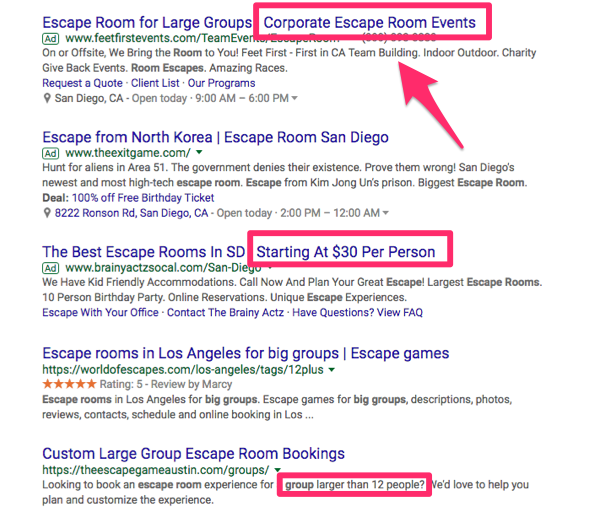
Right away, there are certain keywords in these headlines and meta descriptions that pre-qualify leads.
One of the results advertises corporate events. If you’re planning a birthday party or a similar event, you probably won’t be clicking that link. But if you’re a manager looking to schedule a team building event, that option would definitely appeal to you.
Another way to pre-qualify leads is to use pricing. If people aren’t willing to spend $30 per person at a minimum, they won’t click that link in the middle of the page.
What qualifies as a large group? Well, the business at the bottom of the page says its escape rooms are for groups larger than 12 people.
If you were planning an event for eight people, you’d look elsewhere.
Now that the leads have been pre-qualified, they’ll be more likely to convert when they visit the websites.
13. Create custom landing pages
This tip is related to the topic of traffic sources.
For example, let’s say a PPC advertisement is placed on the sidebar of another website. This ad is promoting a specific product.
The landing page for this ad should be specific to the product or service being promoted. You wouldn’t want to take that user to your homepage because it would lower your conversion rates.
Use this strategy for your SEO efforts as well.
You’ll want to set up different landing pages based on what your prospective customers are shopping for, such as men’s or women’s clothing for your ecommerce shop.
Conclusion
In theory, high search rankings should result in more website traffic.
But if you’re not getting the traffic you’re expecting based on your ranking, it’s time for you to re-analyze your SEO efforts.
While they may be optimized for search engines, that’s useless if Internet users aren’t navigating to your website. It’s in your best interest to take advice from marketers who specialize in generating clicks.
You can learn a lot from PPC campaigns.
Even if you don’t want to pay for ads, you can apply the same principles to your SEO efforts to increase your website traffic.
How do you apply PPC concepts to your SEO strategy?
from Quick Sprout https://ift.tt/2plXc3f
via IFTTT
